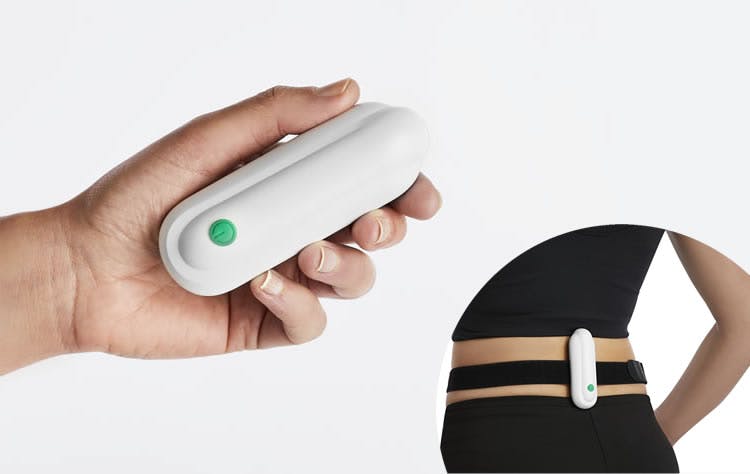How Sciaticalm Works
Discover the innovative science behind our high-frequency vibration technology and how it provides effective, non-invasive sciatica pain relief
The Science Behind Pain Relief
The Sciaticalm device generates high-frequency vibration to pass pulses through the skin to the sciatic nerve, effectively disrupting pain signal transmission.
Pain is transmitted as impulses in the large sensory fibres of the body. By applying a specific frequency to the area of pain, it interacts with the pain impulse transmissions, causing disruption. The pulses effectively 'scramble' the sensory impulses so they cannot be interpreted as pain signals by the brain.
Advanced Technology: Sciaticalm features 10 pre-programmed settings for amplitude, frequency and pulse, all controlled by a sophisticated micro-controller.
Complete Package: Includes rechargeable battery, USB charging cable, and two soft velcro straps for secure, comfortable fitting.

Technology Features
Advanced engineering for optimal pain relief
High-Frequency Vibration
Advanced vibration technology targets pain signals at the source
Gate Control Theory
Disrupts pain impulse transmissions to prevent brain interpretation
10 Pre-Programmed Settings
Customizable amplitude, frequency and pulse modes for optimal treatment
Rechargeable Design
Long-lasting battery with included charging cable and velcro straps
Clinical Benefits
Proven effectiveness backed by medical research
NICE Approved
Treatment modality approved by the National Institute for Health & Care Excellence
20+ Years Established
Shockwave therapy has been proven effective for over two decades
Enhanced Blood Flow
Stimulates formation of new blood vessels for accelerated recovery
Safe & Non-Invasive
Cost-effective procedure with no side effects or medication needed
Medical Validation: Shockwave therapy combines pain relief through gate control theory with enhanced blood vessel formation, increasing blood supply to accelerate healing and recovery.
Research & Clinical Studies
Evidence-based treatment backed by scientific research
15+
Studies
20+
Years
100%
Peer Review
Clinical Evidence
Multiple studies have investigated vibration therapy for treating acute and chronic musculoskeletal conditions across various body areas.
Research demonstrates that high-frequency vibration can be used as a cost-effective and safe procedure to significantly improve sciatica symptoms in patients. Understanding what sciatica isand combining treatment with gentle sciatica exercisescan enhance recovery outcomes.
View Clinical ResearchPeer-Reviewed Studies
Published in reputable medical journals including Journal of Pain and Scandinavian Journal of Rehabilitative Medicine
Comparative Analysis
Studies comparing vibration therapy effectiveness against traditional pain medications and TENS units
ESWT Research
Extracorporeal Shockwave Therapy studies demonstrating efficacy in treating lateral epicondylitis and plantar fasciitis
Latest Research Papers
- Pain alleviation by vibratory stimulation, Lundeberg et al, The Journal of Pain, 1984.
- Effect of vibratory stimulation on experimental and clinical pain, Lundeberg et al - Scandinavian Journal of Rehabilitative Medicine, 1988.
- Effects of vibratory stimulation on muscular pain threshold and blink response in human subjects, Pantaleo et al – Journal of Pain 1986.
- Treatment Options for Tennis Elbow - 2008.
- Vibration Anesthesia: Discussion.
- Vibratory stimulation for the alleviation of chronic pain, Acta Physiol Scand Suppl. 1983;523:1-51.
- The Effects of Extracorporeal Shockwave Therapy (ESWT) in Treating Lateral Epicondylitis in People Between 40 and 50 Years Old
- Shock wave therapy for patients with lateral epicondylitis of the elbow (tennis elbow): a one to two year follow-up study.
What Our Patients Say
Don't take our word for it – read what thousands of satisfied customers have to say about their experience with Sciaticalm.
See more authentic feedback on our Trustpilot page:
Rated EXCELLENT 4.4/5








